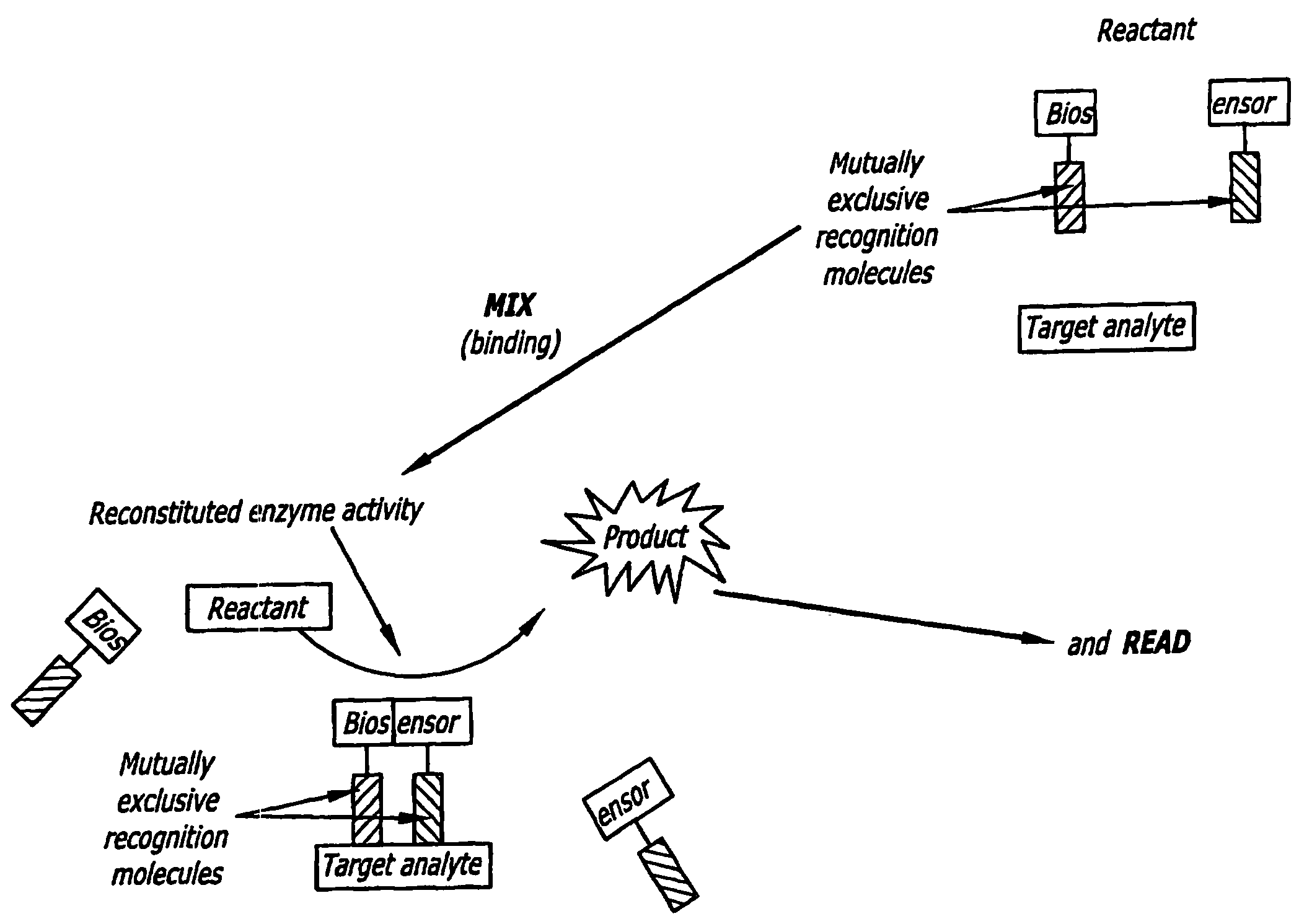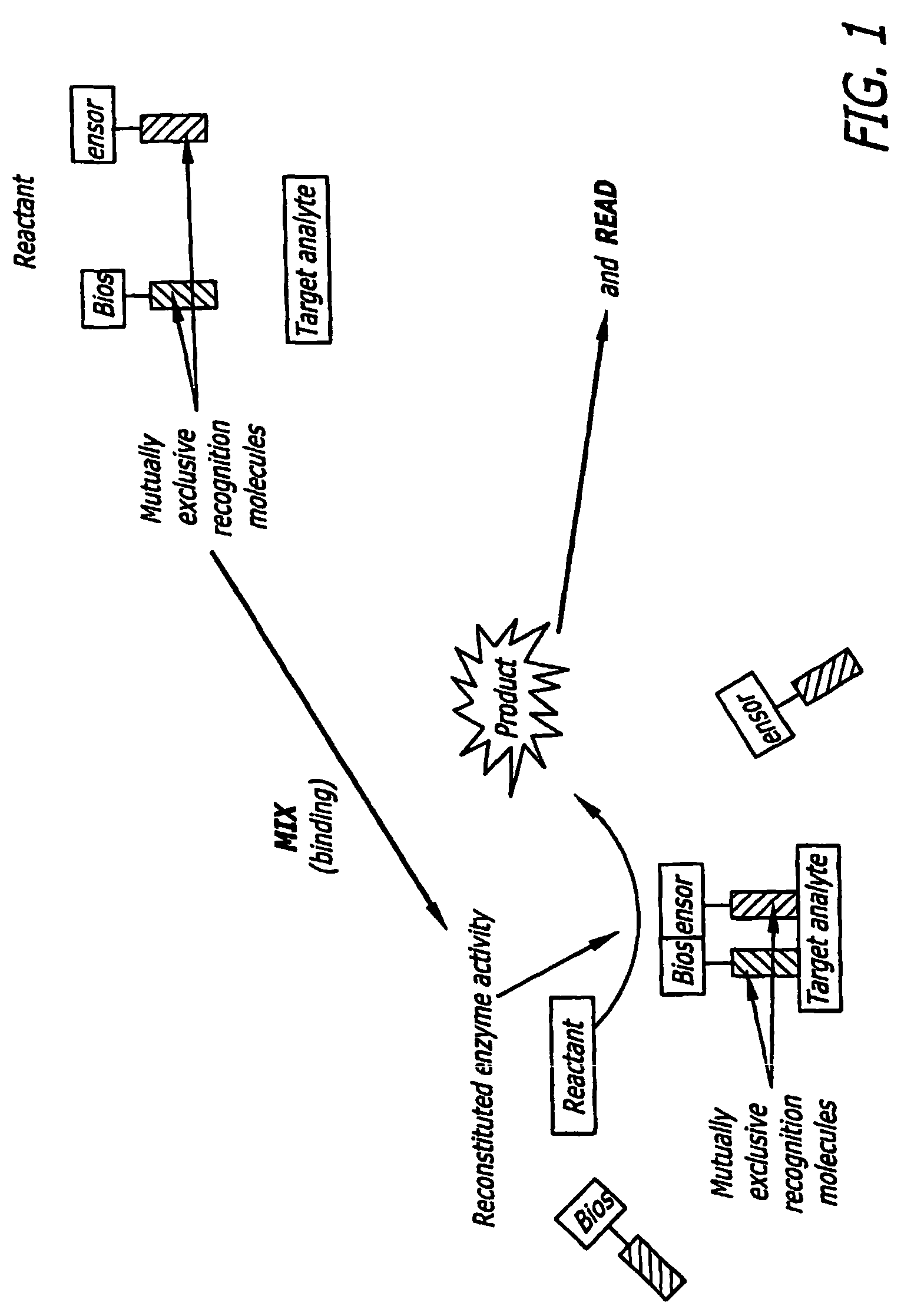Split Enzyme Linked Immunosorbent and Nucleic Acid Assays
- Summary
- Abstract
- Description
- Claims
- Application Information
AI Technical Summary
Benefits of technology
Problems solved by technology
Method used
Image
Examples
Embodiment Construction
[0033]As set forth in FIG. 1, the present invention provides a split biosensor-linked immuno / nucleic acids detector which is solution-based, homogenous, “mix and read” that relies on dual-recognition (coincidence detection) of the analyte molecule coupled with enzymatic gain. This concept is very general and can be used to detect proteins, DNA, RNA, and many other kinds of macromolecules. The biosensor is composed of a split enzyme, where the two halves are linked to two recognition molecules, such as two single chain antibody fragments (ScFv), full antibodies, recognition peptides, DNA / PNA oligomers, aptamers, and the like. These recognition molecules bind to two, non-overlapping (‘mutually exclusive’ or “distinct”) epitopes of the same target analyte. Alternatively, they are linked to two ssDNA / PNA / aptamer oligonucleotides that are complementary and hybridize to a nucleic acid target sequence in tandem. Each ScFv / DNA / PNA / aptamer is linked through a non-degradable linker to a recon...
PUM
| Property | Measurement | Unit |
|---|---|---|
| Enzyme activity | aaaaa | aaaaa |
Abstract
Description
Claims
Application Information
 Login to View More
Login to View More - R&D
- Intellectual Property
- Life Sciences
- Materials
- Tech Scout
- Unparalleled Data Quality
- Higher Quality Content
- 60% Fewer Hallucinations
Browse by: Latest US Patents, China's latest patents, Technical Efficacy Thesaurus, Application Domain, Technology Topic, Popular Technical Reports.
© 2025 PatSnap. All rights reserved.Legal|Privacy policy|Modern Slavery Act Transparency Statement|Sitemap|About US| Contact US: help@patsnap.com



